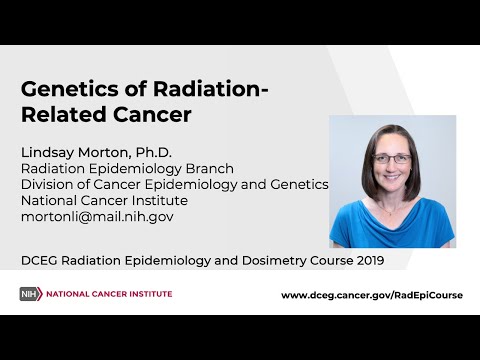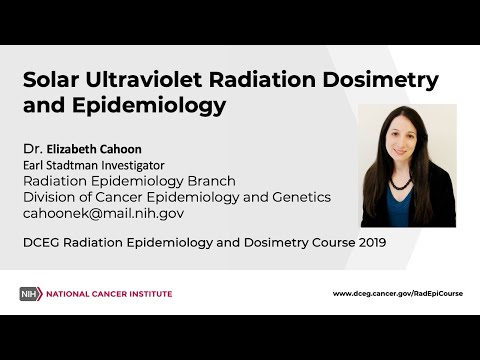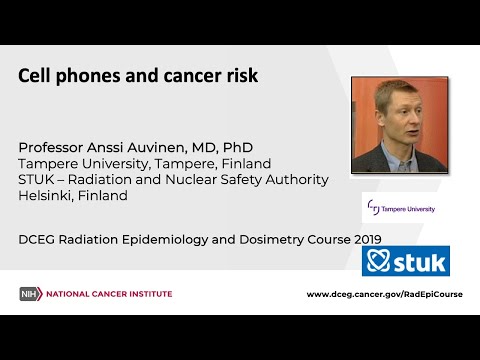DCEG research into the associations of radiation exposure and cancer has had significant impacts in the following areas:
Medical Radiation from Therapeutic and Diagnostic Procedures
DCEG radiation epidemiologists have contributed greatly to the advancement of medical practice through their study of ionizing radiation from therapeutic and diagnostic procedures.
DCEG experts employed statistical models to estimate future cancer risks associated with radiation exposure from computed tomography (CT) scans. As a result, the NIH adopted a requirement that makers of CT scanners used at NIH facilities incorporate software to measure and track patients’ radiation doses over time. This patient protection policy is being adopted by other hospitals and imaging facilities (Berrington de González et al., 2009).
Recent work in this field has identified small but statistically increased risks of leukemia and brain tumors in the first decade after CT exposure in children (Pearce et al., 2012). More information on CT exposure in children
DCEG researchers studying children treated for cancer with radiotherapy demonstrated a dose-response relationship: i.e., the higher the radiation dose the children received, the higher the risk that they would develop a second cancer, notably bone sarcoma and thyroid cancer. These findings spurred the medical community to decrease doses of radiotherapy in children (Tucker et al., 1987, 1991).
Medical practice has been altered to reduce radiation exposure and intensify second cancer screening after DCEG researchers identified the striking dose-related risk of radiation-related second cancers among children treated for retinoblastoma (Kleinerman et al., 2005) in the Retinoblastoma Follow-up Study.
After investigators reported that bone marrow recipients showed elevated risk of radiation-related solid cancers (Curtis et al., 1997; Socie et al., 2000; Rizzo et al., 2009), conditioning regimens used to prepare patients prior to stem cell transplantation were shifted from radiation to chemotherapy-based regimens.
DCEG investigators created a professional education brochure in collaboration with the Society for Pediatric Radiology as part of an effort to minimize the level of radiation from CT scans to children.
DCEG research quantified the dose response for risk of lung and breast cancers in patients treated with radiation for Hodgkin lymphoma (Tucker et al., 1988; Travis et al., 2002, 2003). This information influenced clinical standards to reduce radiation fields, lower exposures, and advise patients to avoid smoking.
Learn about our current research on medical radiation
Radioactive Fallout or Environmental Contamination from Nuclear Weapons
National and international radiation safety standards have been influenced by findings from DCEG studies of cancer and leukemia among atomic bomb survivors and pooled analyses of radiation-related risk of thyroid cancer from studies of other exposed populations. (Ron et al., 1994, 1995, 1998; Land et al., 1995, 1996, 2003).
When adjudicating personnel claims for compensation due to exposure to ionizing radiation on the job, the National Institute for Occupational Safety and Health and the Veterans Administration have used statistical models and a Web-based interactive program developed by DCEG to estimate the probability that a given cancer in an individual was induced by given exposures to ionizing radiation. (NIH, 1985, 2003; Kocher et al., 2008)
DCEG investigators reported on the potential health risks of exposure to radioactive I-131 fallout from above-ground nuclear testing that occurred in Nevada in the 1950s and 1960s (NCI, 1997; Gilbert et al., 1998). A national educational campaign aimed at informing the public was initiated based on information in these reports. More information on radioactive I-131 from fallout.
Naturally-occurring Radiation
Radon, a radioactive gas formed by the natural breakdown of uranium in soil, rock and water, can cause lung cancer. This exposure can be especially hazardous indoors where it can become more concentrated. DCEG researchers quantified lung cancer risks associated with occupational and residential exposures to radon. These findings were critical to the formulation of radon mitigation guidelines issued by policymakers at the U.S. Environmental Protection Agency (EPA) (Qiao et al., 1989; Lubin et al., 1990, 1997, 1998, 2004; Alavanja et al., 1994, 1999; Wang et al., 2002).
Ultraviolet Radiation
It is generally accepted that if ozone levels in the earth’s stratosphere are depleted, greater amounts of shortwave ultraviolet radiation will reach the earth's surface, resulting in increased skin cancer. DCEG researchers provided the U.S. EPA with estimates of increases in melanoma and other skin cancers in relation to projected increases in ozone depletion. These estimates were based on analyses of data from surveys of ground-level ultraviolet radiation in relation to time trends for melanoma and other skin cancers (Scotto et al., 1975, 1981; Fears et al., 1976, 1977, 1983).
Electromagnetic Fields
DCEG researchers conducted the first study of cellular telephones; they found no association with increased risk of brain tumors. This finding informed U.S. Food and Drug Administration’s regulatory policies on radiofrequency radiation (Inskip et al., 2001). In continued followup of this exposure, investigators reported, in 2012, that incidence trends have remained roughly constant for glioma, the main type of brain cancer hypothesized to be related to cell phone use. They found that while cell phone use increased substantially over the period 1992 to 2008 (from nearly zero to almost 100 percent of the population), the U.S. trends in glioma incidence did not mirror that increase (Little MP 2012). Results of this study were published online March 8, 2012, in the British Medical Journal. Learn about our current research on cellular phones and brain tumors.
DCEG researchers demonstrated no increased risk for childhood leukemia associated with residential exposure to magnetic fields generated by nearby power lines. This information formed the basis of judicial rulings in the United Kingdom and elsewhere on the potential health effects of these exposures (Linet et al., 1997).
Radiation: Full list of article citations



